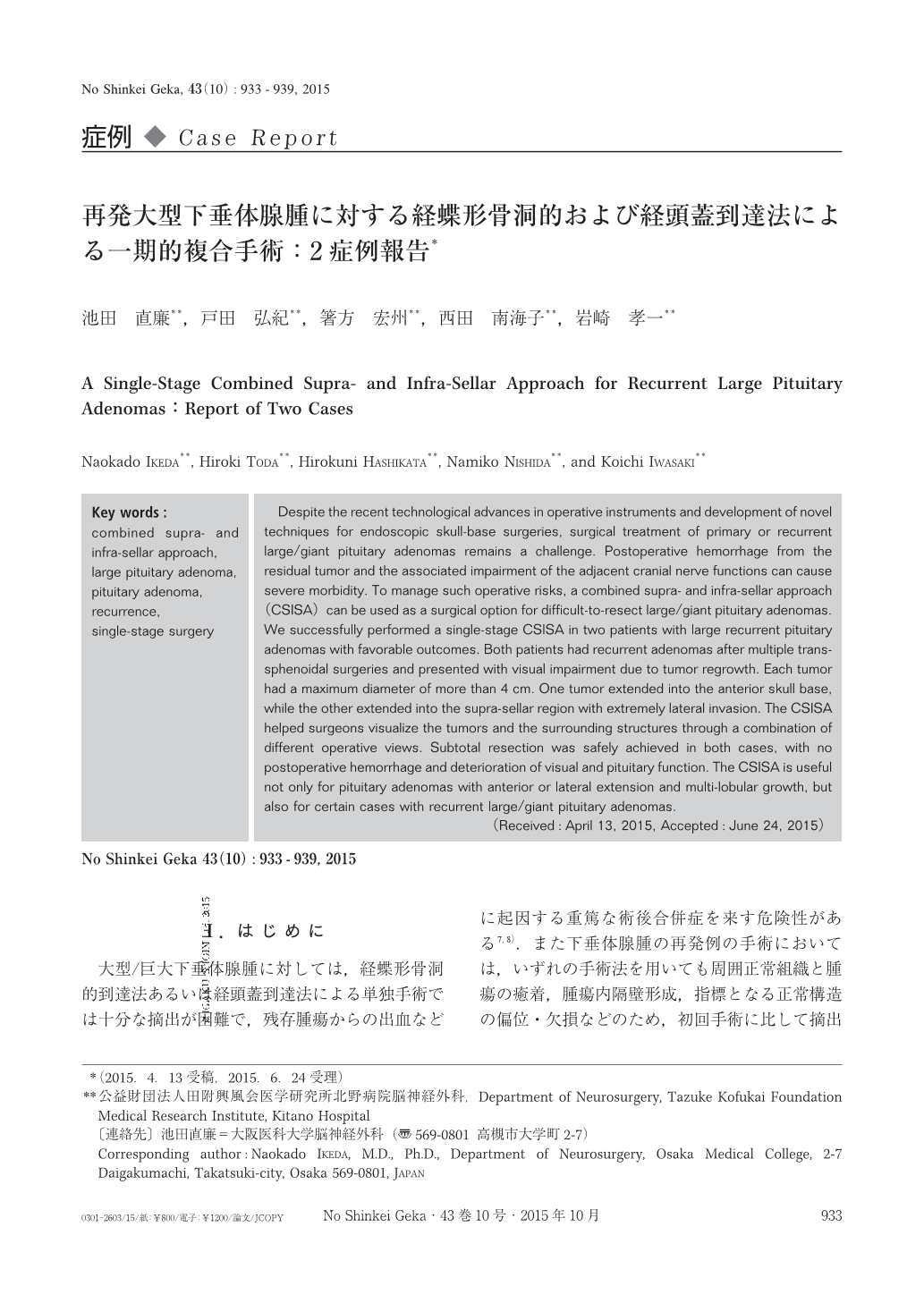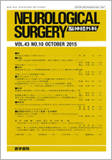Japanese
English
- 有料閲覧
- Abstract 文献概要
- 1ページ目 Look Inside
- 参考文献 Reference
Ⅰ.はじめに
大型/巨大下垂体腺腫に対しては,経蝶形骨洞的到達法あるいは経頭蓋到達法による単独手術では十分な摘出が困難で,残存腫瘍からの出血などに起因する重篤な術後合併症を来す危険性がある7,8).また下垂体腺腫の再発例の手術においては,いずれの手術法を用いても周囲正常組織と腫瘍の癒着,腫瘍内隔壁形成,指標となる正常構造の偏位・欠損などのため,初回手術に比して摘出が格段に困難であることは論をまたない2).今回われわれは,再発大型非機能性下垂体腺腫の2例に対して,内視鏡下経蝶形骨洞的到達法と経頭蓋到達法同時手術(combined supra- and infra-sellar approach:CSISA)による一期的摘出術を行い良好な結果を得たので,文献的考察を加え報告する.
Despite the recent technological advances in operative instruments and development of novel techniques for endoscopic skull-base surgeries, surgical treatment of primary or recurrent large/giant pituitary adenomas remains a challenge. Postoperative hemorrhage from the residual tumor and the associated impairment of the adjacent cranial nerve functions can cause severe morbidity. To manage such operative risks, a combined supra- and infra-sellar approach(CSISA)can be used as a surgical option for difficult-to-resect large/giant pituitary adenomas. We successfully performed a single-stage CSISA in two patients with large recurrent pituitary adenomas with favorable outcomes. Both patients had recurrent adenomas after multiple trans-sphenoidal surgeries and presented with visual impairment due to tumor regrowth. Each tumor had a maximum diameter of more than 4 cm. One tumor extended into the anterior skull base, while the other extended into the supra-sellar region with extremely lateral invasion. The CSISA helped surgeons visualize the tumors and the surrounding structures through a combination of different operative views. Subtotal resection was safely achieved in both cases, with no postoperative hemorrhage and deterioration of visual and pituitary function. The CSISA is useful not only for pituitary adenomas with anterior or lateral extension and multi-lobular growth, but also for certain cases with recurrent large/giant pituitary adenomas.

Copyright © 2015, Igaku-Shoin Ltd. All rights reserved.


